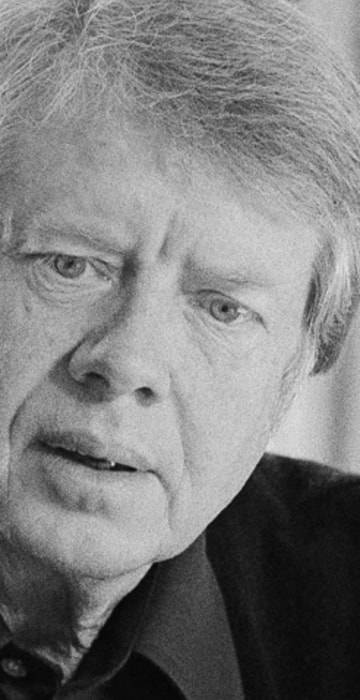
Politics News
The life and times of Jimmy Carter
Rising from his roots as a peanut farmer's son, Jimmy Carter had a troubled one-term presidency — and then found a long and successful career as a peace activist. Take a look back at his life.
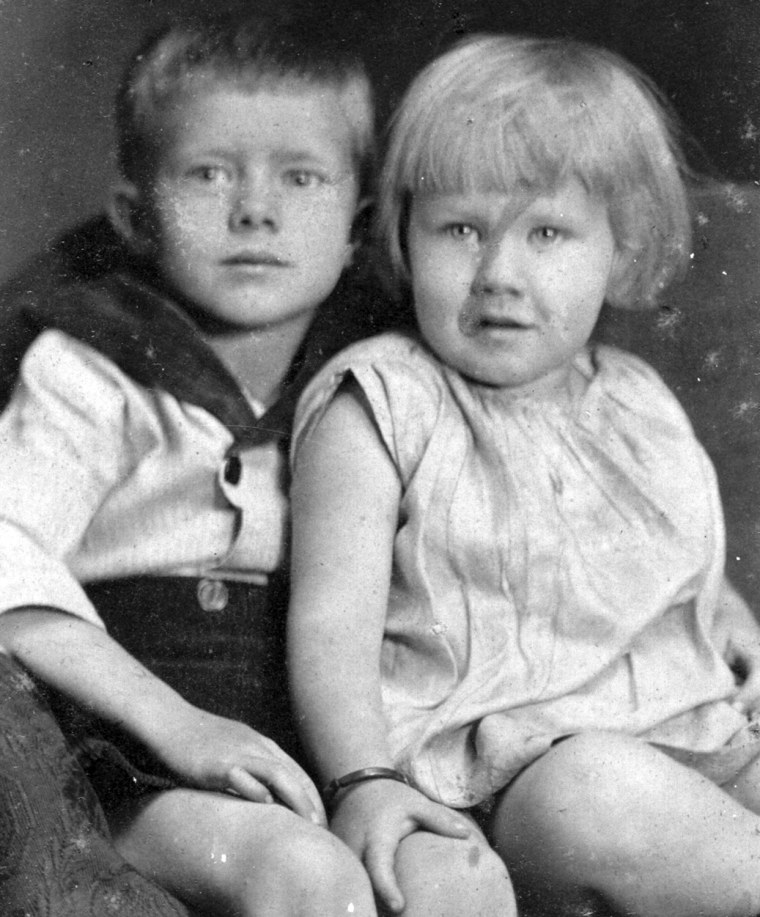
Early days
The future 39th president of the United States was born on October 1, 1924, in Plains, Ga.. The first president to be born in a hospital, he was the oldest child of James Earl Carter, a prominent local businessman and farmer, and Bessie Carter, a nurse. Here, he is seen with his sister Gloria in 1928.

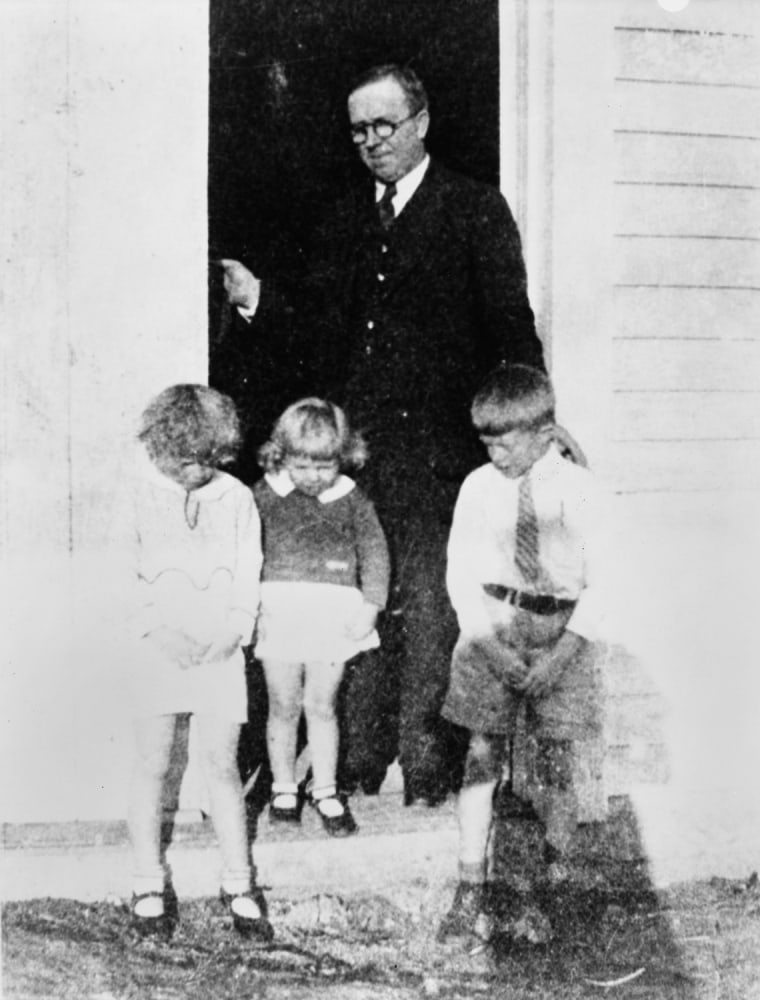
Father knows best
The future president's father, James Earl Carter Sr., ran a grocery store and peanut farm in Plains. He also served in the Georgia House of Representatives until his death in 1953. In this photo he is seen with Jimmy (right), Gloria (left) and Ruth in front of his store in 1932.
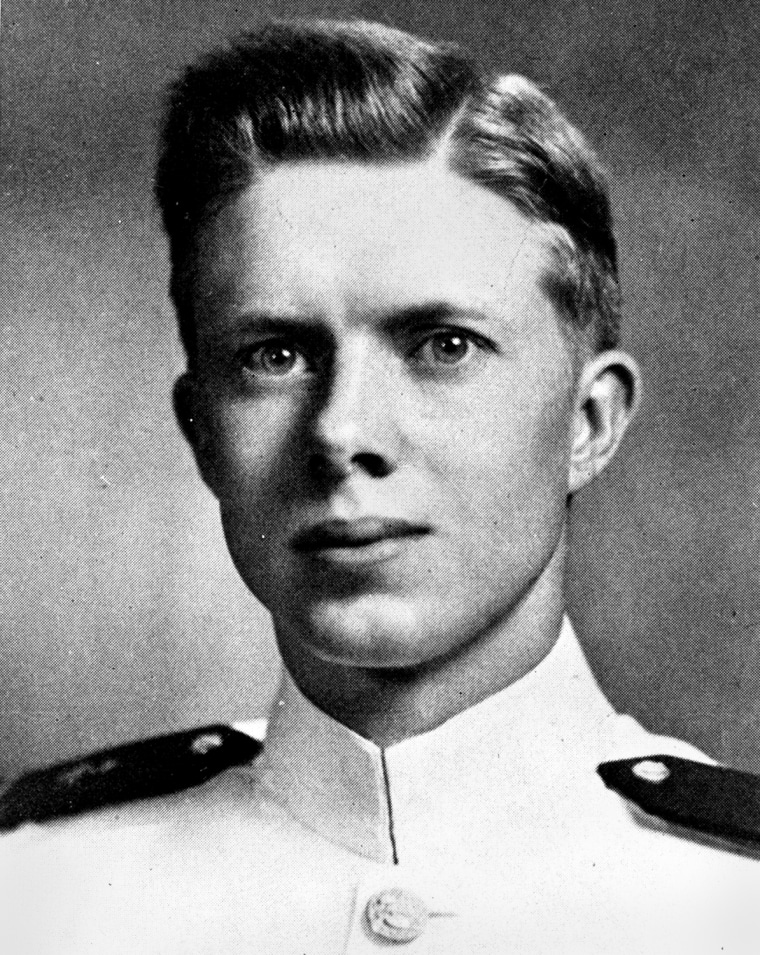
He's in the Navy now
In 1943, Carter was admitted to the U.S. Naval Academy in Annapolis, Md. He is seen here in a 1946 portrait from the academy's yearbook after graduation with distinction (he was 59th out of 820 in his class). Carter then went on to serve on submarines and was discharged honorably in 1953.
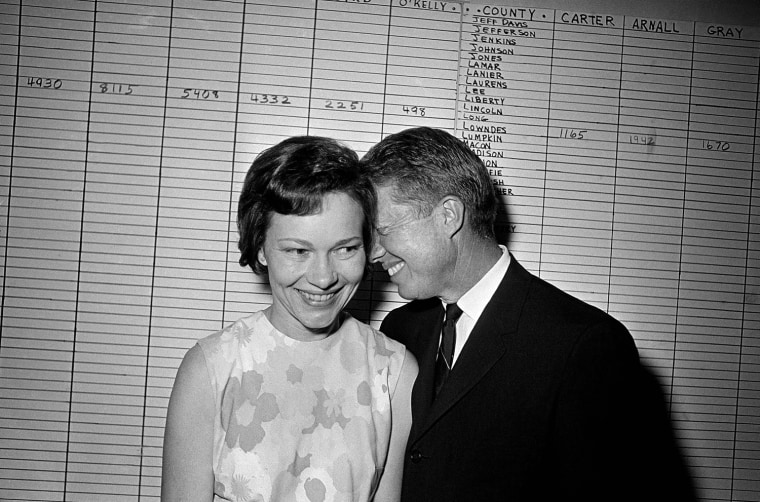
At his side
While building his peanut business, Carter became involved in local politics, eventually deciding to run for a seat in the state senate. He won election to the body in 1962 and served two two-year terms. In 1966, he decided to run for governor of Georgia, but was defeated in the Democratic primary. Here, he hugs his wife, Rosalynn, at his Atlanta campaign headquarters after his loss. The two were married in 1946, having met on a trip home during his last year at Annapolis.

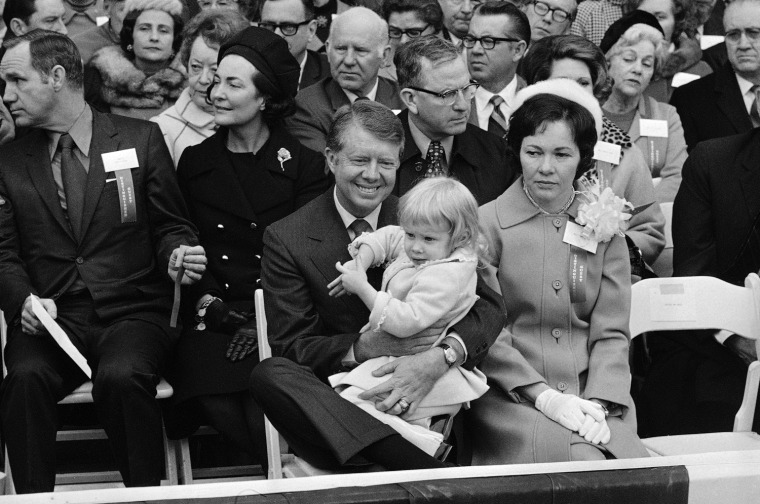
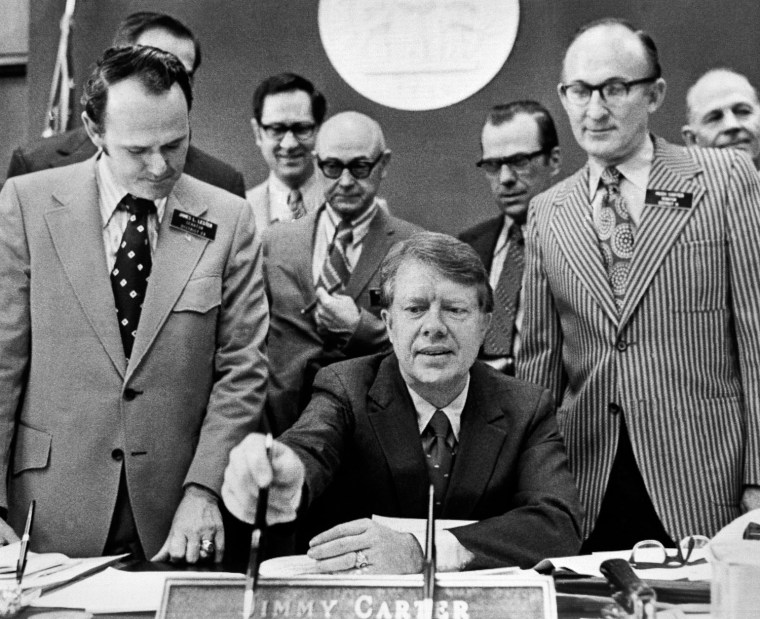
Georgia ink
As part of his election campain, partly to attract conservative voters, Carter had opposed busing as a means of integrating Georgia schools. Here, he signs a 1972 Georgia Senate resolution opposing federal moves to force busing. However, Carter declared in his 1971 inaugural speech that the time of racial segregation was over, and that racial discrimination had no place in the future of the state. He appointed many African-Americans to statewide boards and offices and was often called one of the "New Southern Governors," much more moderate than their predecessors.

The Walter wave
It did not take long for Carter to develop ambitions outside Georgia. Just a year after moving into the governor's mansion, he was lobbying to become George McGovern's running mate for the 1972 election, but was outvoted. However, the campaign put him on the map with party insiders and in 1976 he ran for the presidential nomination. Seen as a longshot, he campaigned relentlessly and gained traction as a relatively conservative alternative to liberal candidates, who had become viewed an unelectable after McGovern's defeat. Here is seen with his choice for running mate, Sen. Walter Mondale, at the Democratic National Convention.
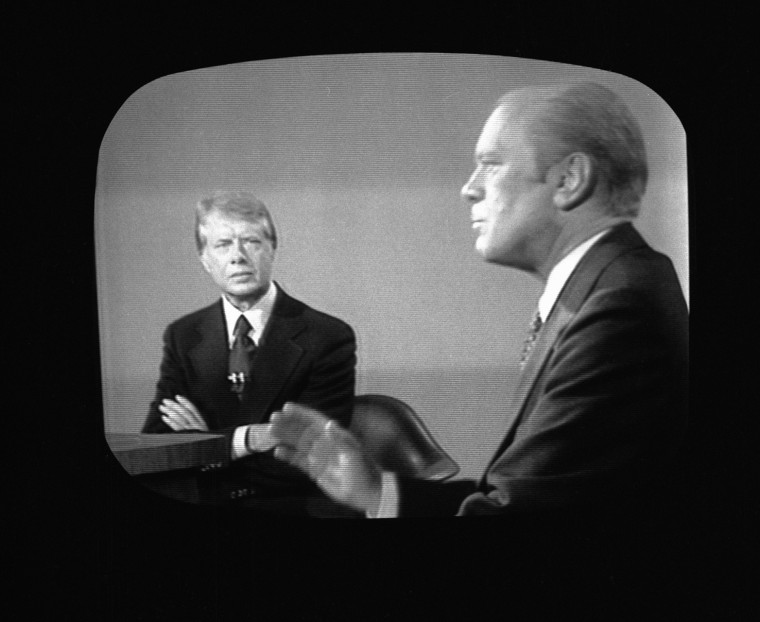
Two on the tube
Having secured the Democratic nomination, Carter went on to face Republican Gerald Ford, who had ascended to the presidency following the 1974 resignation of Richard Nixon. Here, Carter and Ford are seen during their second presidential debate, held in San Francisco in October 1976.

Embracing a victory
Having led by quite a big margin in polls, Carter won the general election by only two percent of the popular vote. The result made him the first contender from the Deep South to be elected president since 1848. Here, he embraces Rosalynn after receiving the confirmation of his victory on November 2, 1976.
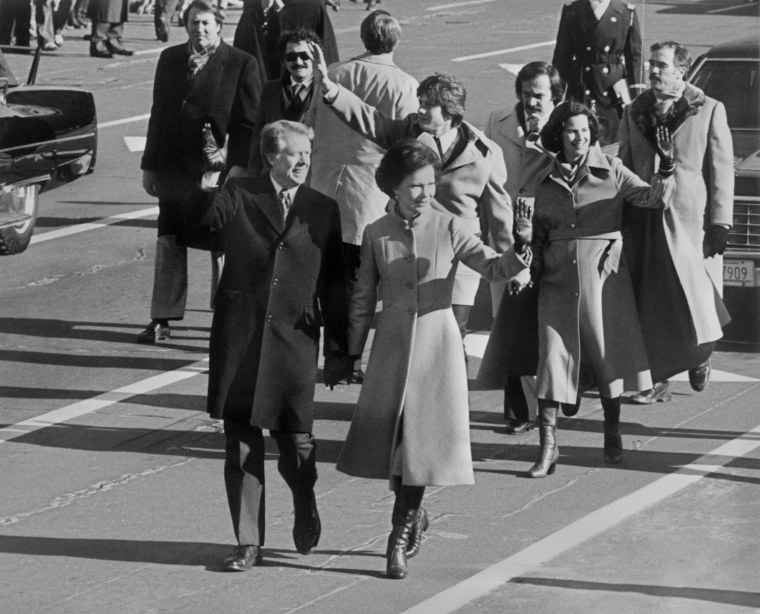
Look, ma, no car!
Carter and his wife walk up Pennsylvania Avenue after his inauguration in Washington, D.C., on January 21, 1977. This was the first time in history that a president had not ridden toward the White House in a carriage or automobile in the grand parade to celebrate his taking the oath of office.
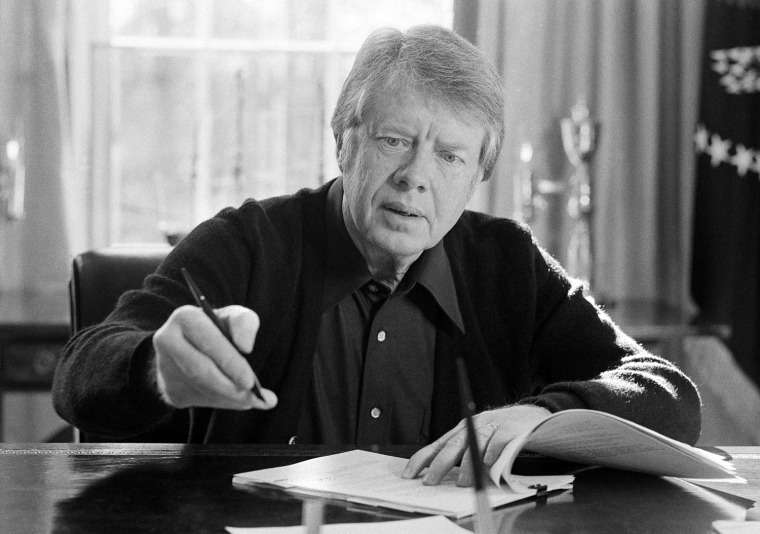
Brrr! Time for a sweater
Carter's election coincided with a worldwide energy crisis, which led to lowered speed limits and other frugality measures. Seen here in February 1977, he signs a disaster relief declaration for cold-stricken Buffalo, N.Y., while wearing a sweater to chase the chill in the lowered temperature of the White House.

Youth in the Oval Office
The Carters moved into the White House with their daughter, Amy. The first child to live in the executive mansion since John Kennedy's children, Amy received intense scrutiny from the media. Here she sits on her father's lap in the Oval Office during 1978.
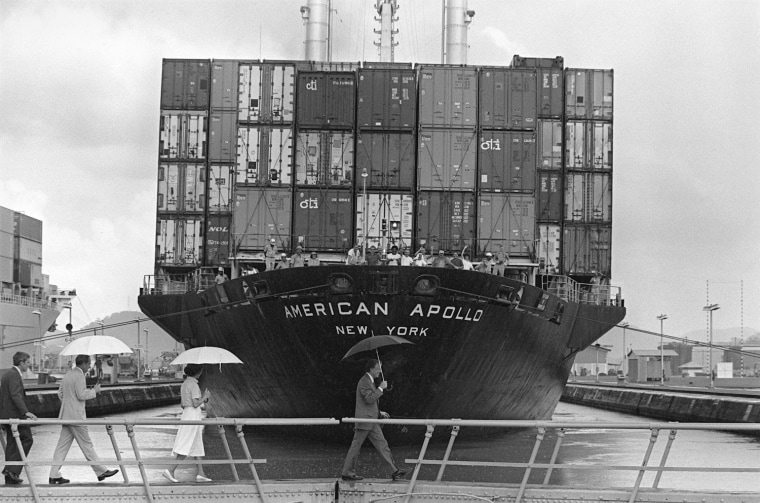
Canal in focus
One of President Carter's first foreign policy decisions was to pursue negotiations to relinquish control of the Panama Canal, which had been in American hands since it was built in the early 20th century. On September 7, 1977, Carter and Panamanian President Omar Torrijos Herrera signed the Panama Canal treaties, which provided for the canal to be handed over to Panama in 1999 and guaranteed the canal's neutrality. Here, Carter and his wife, Rosalynn, cross a plank in front of the container ship American Apollo while visiting the Panama Canal in June 1978.

At the same time as he was dealing with the Panama Canal issue, Carter launched a concerted effort to bring peace in the Mideast, particularly after the Yom Kippur War of 1977. The efforts led to the August 1978 Camp David peace talks between Israeli Prime Minister Menachem Begin, right, and Egypt's Anwar Sadat. Here, they clasp hands on the north lawn of the White House after signing the peace treaty between Egypt and Israel on March 26, 1979, making Egypt the first Arab nation to recognize the Jewish State.
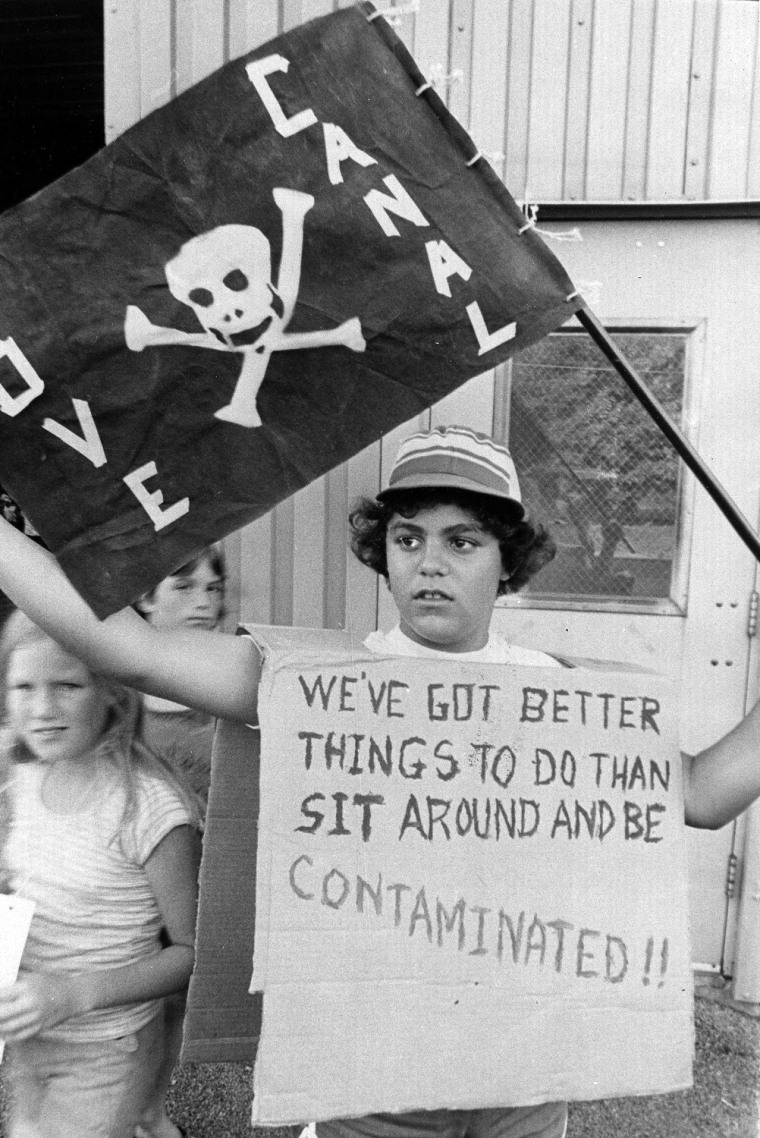
Another canal crisis
In addition to the energy crisis, Carter had other pressing domestic issues, one of them being Love Canal, a neighborhood that had been built on top of a toxic waste landfill. The Superfund law was created in response to the situation and federal disaster money was appropriated to demolish approxmately 500 houses and several schools. In this picture, Mark Zanatian, one of the children endangered by the Love Canal chemicals, waves a banner in protest during a neighborhood protest meeting on Aug. 5, 1978.

Hostage horror
The biggest crisis faced by Carter was the seizure in late 1979 of American Embassy staff in Tehran. The kidnappings by Iranian fundamentalists dominated the news during the last 14 months of the administration and contributed to Carter's defeat by Ronald Reagan in 1980. Iran finally released the Americans the same day Carter left office. This photo shows one of the hostages being paraded, blindfolded, by several of his captors.
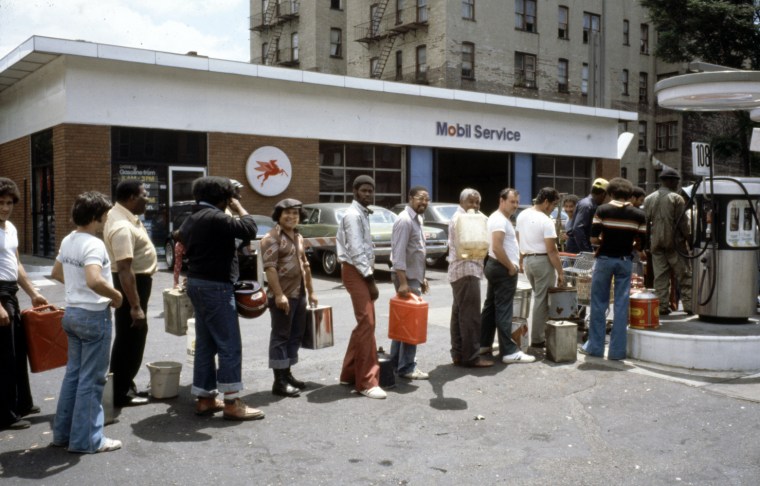
Out of energy
For the whole of his presidency Carter had to contend with an ongoing energy crisis, which had been sparked by a 1973 action by OPEC to restrict fuel supplies. Carter's measures included price controls and conservation measures. In this picture, people liine up for gasoline during one of the peak points of the crisis in June 1979.
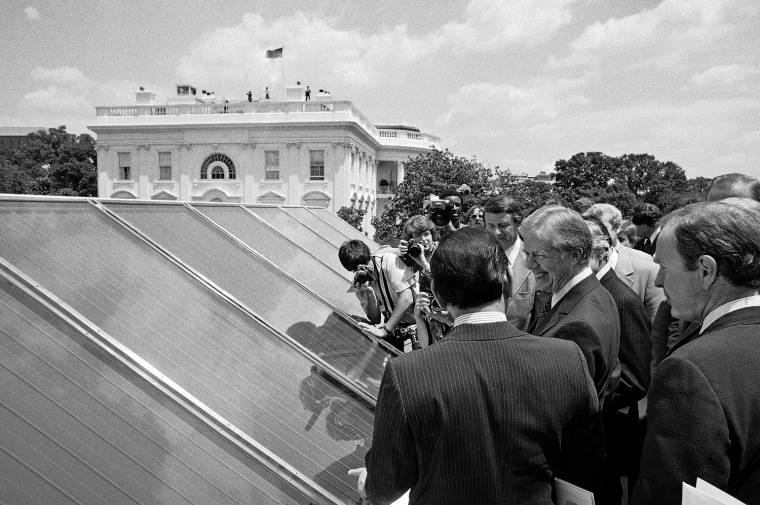
Sunny disposition
Carter even went so far as to have solar hot water heating panels installed on the roof of the White House. Here, he inspects them in June 1979.
In 1986 the Reagan administration quietly dismantled the White House solar panel installation while resurfacing the roof.
![Richard L. Thornburgh;Harold Denton;James E. Jr. Carter [& Wife]](https://media-cldnry.s-nbcnews.com/image/upload/t_fit-760w,f_auto,q_auto:best/MSNBC/Components/Slideshows/_production/ss-101001-jimmy-carter/ss-101001-jimmy-carter-nuclear.jpg)
Three Mile Island
As Carter deallt with the energy crisis, another form of energy emergency presented itself in the form of a meltdown and radiation leak at the Three Mile Island nuclear plant near Harrisburg, Pa. Here, Carter and his wife meet with plant officials and Pennsylvania's governor at the crippled plant.
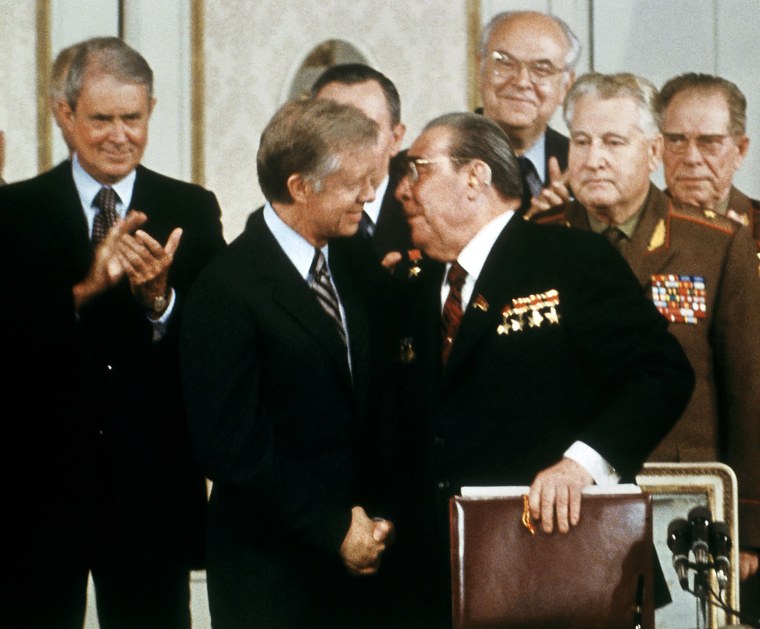
Soviet solution
One of Carter's major initiatives was to build on the Strategic Arms Limitation Treaty (SALT) negotiated with the Soviet Union by Presidents Nixon and Ford. Here, Carter shakes hands with Soviet leader Leonid Brezhnev as U.S. Secretary of State Cyrus Vance, back left, and unidentified Russian officials watch during the SALT II signing ceremony in June 1979 in Vienna.
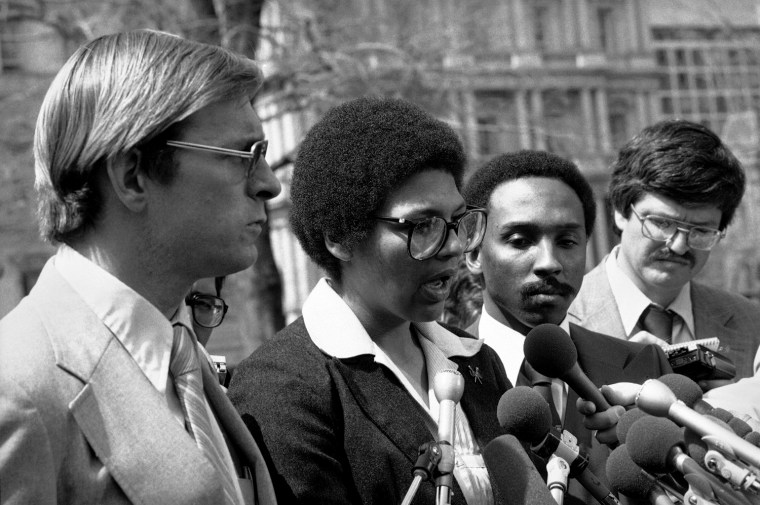
Olympic protest
Having signed the SALT II accords with the Soviet Union, Carter was then faced with Russia's invasion of Afghanistan later in 1979, a move seen as threatening to America's interests in the region. In retaliation, Carter decided to boycott the 1980 Olympics due to be held in Moscow. Here, three members of the U.S. Olympic Committee's Athlete Advisory Council face the press in Washington after they met with White House officials to protest the boycott. The Soviet Union, in turn, boycotted the 1984 Summer Olympics in Los Angeles.
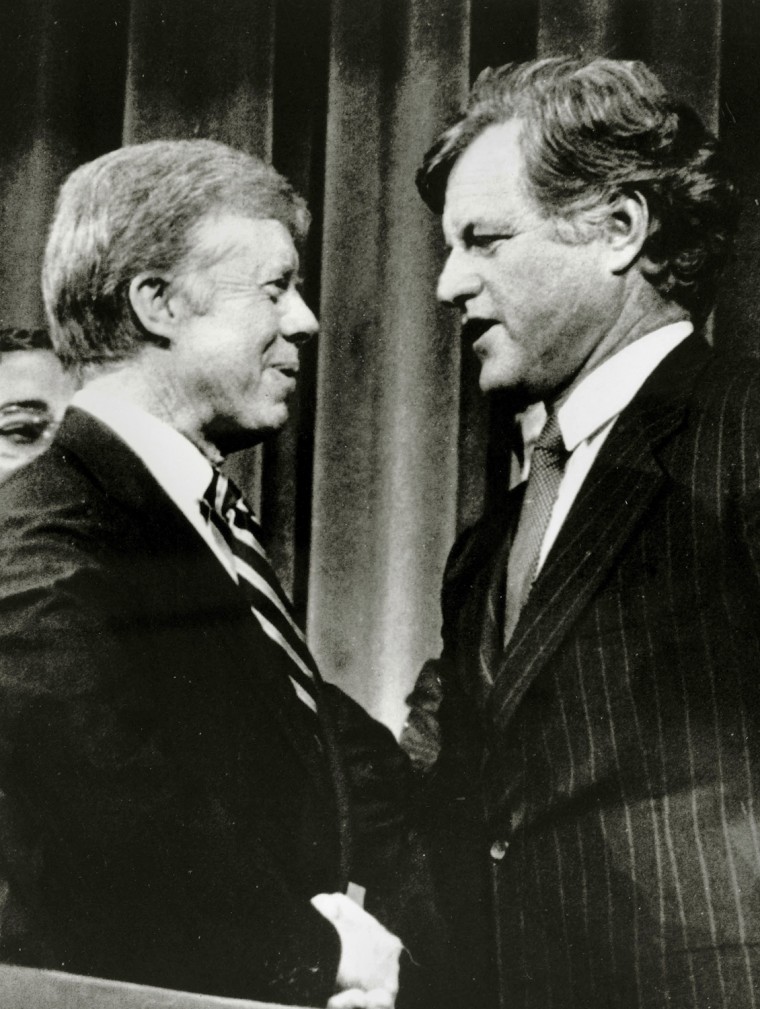
Ahead of Ted
With the arrival of 1980, Carter faced the prospect of trying to be reelected. His first task was to face down a challenge by Sen. Edward Kennedy, who, despite a spirited campaign, was handily defeated by the president. In large part this was due to continuing questions about the 1969 Chappaquiddick incident, in which a young female aide was killed. Kennedy continued his campaign right up to the August Democratic National Convention, eventually conceding to Carter. Here, the two shake hands at the convention.
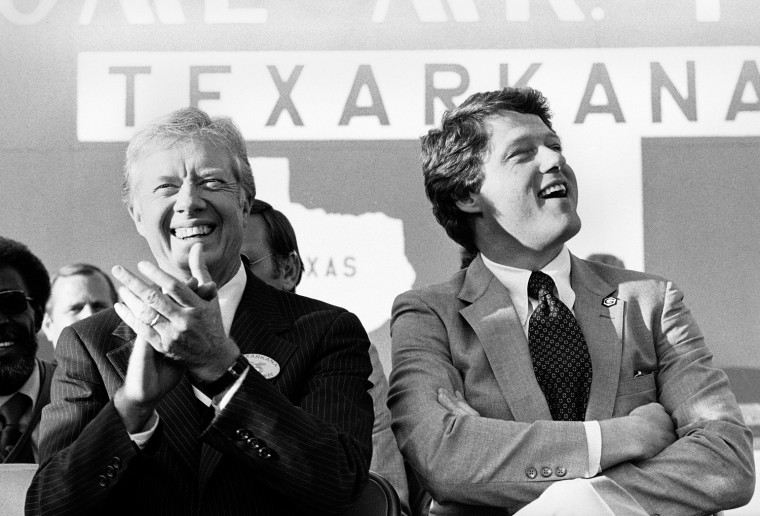
Clinton, but little hope
After winning the Democratic nomination, Carter, weighed down by the Iran hostage crisis and contining economic woes, faced an uphill battle against Republican nominee Ronald Reagan. Here, Carter and then-Arkansas Gov. Bill Clinton enjoy a chuckle during an October 1980 rally for Carter held in Texarkana, Tex.
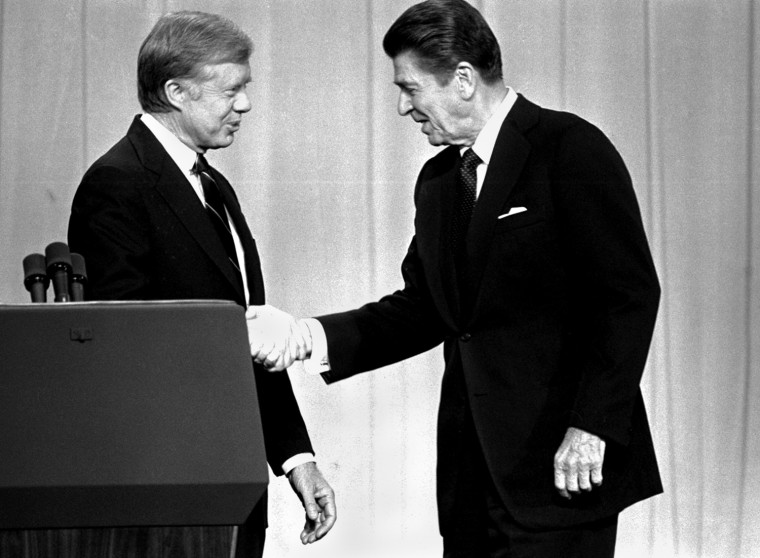
![Mrs. James E. Jr. Carter;Amy Carter;James E. Jr. Carter [& Family]](https://media-cldnry.s-nbcnews.com/image/upload/t_fit-760w,f_auto,q_auto:best/MSNBC/Components/Slideshows/_production/ss-101001-jimmy-carter/ss-101001-jimmy-carter-depart.jpg)
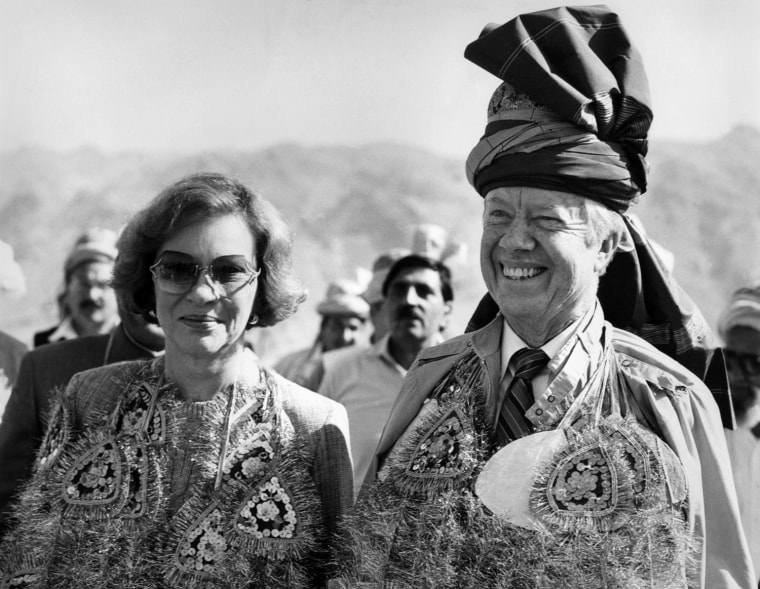
Where's the magic carpet?
Following his defeat, Carter threw himself into the formation of the Carter Center, a non-profit aimed at promoting democracy and conflict prevention as well as fighting disease and malnutrition around the world. Here, Carter, wearing a local turban and garlands presented by the Pakistani tribesmen, visits the Khyber Pass area near the Afghanistan border.
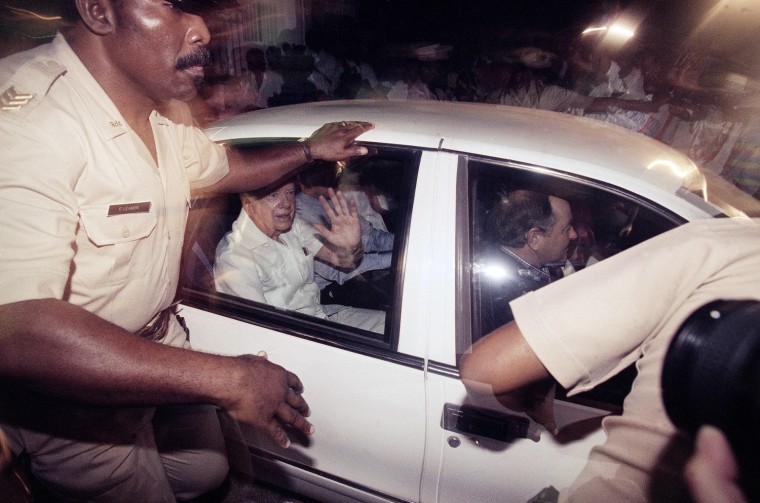
Get Carter
Another role Carter took on was diplomacy and intervention during international crises. Here, he waves as he leaves the presidential palace in Port-au-Prince after meeting with Haitian leaders during 1994. Following Carter's intervention, Haiti's military leaders agreed to step down after marathon talks, paving the way for exiled President Jean-Bertrand Aristide's peaceful return.
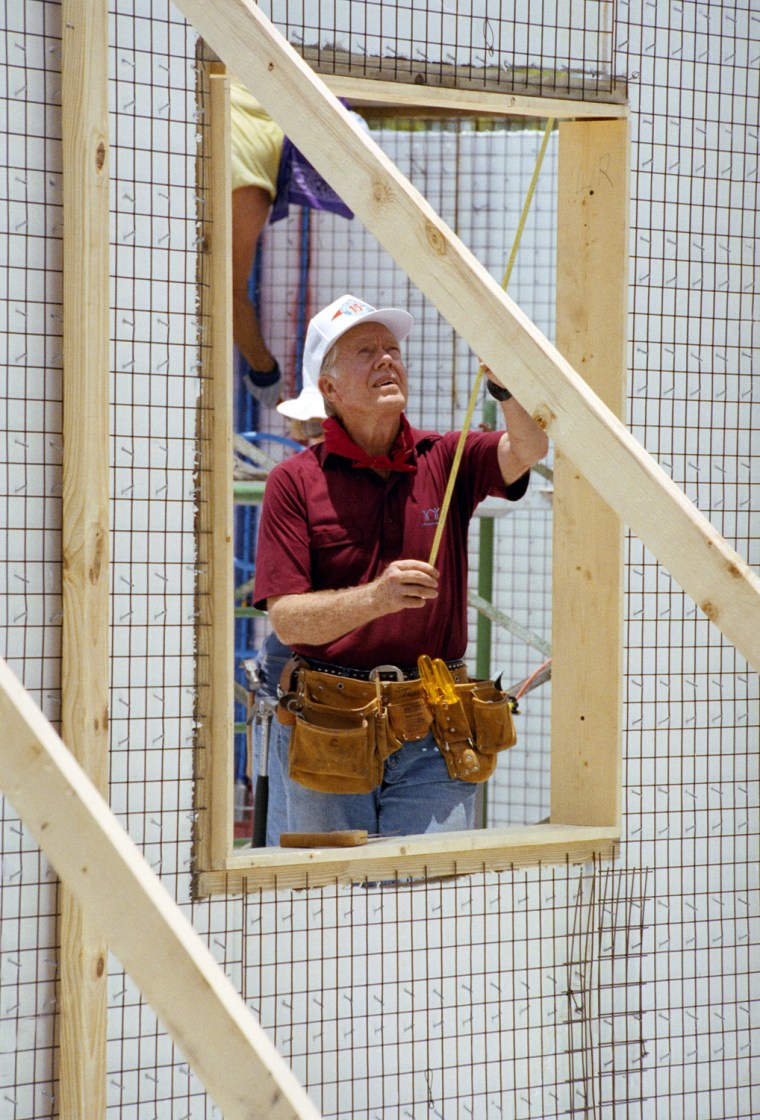
Hands-on at Habitat
Carter also applied his energies to domestic issues, particularly housing, and took a big role in Habitat for Humanity, an organization trying to improve conditions for low-income Americans. Much of his work was hands-on. Here, Carter measures a window opening for homes he helped construct in Miami in 1991.
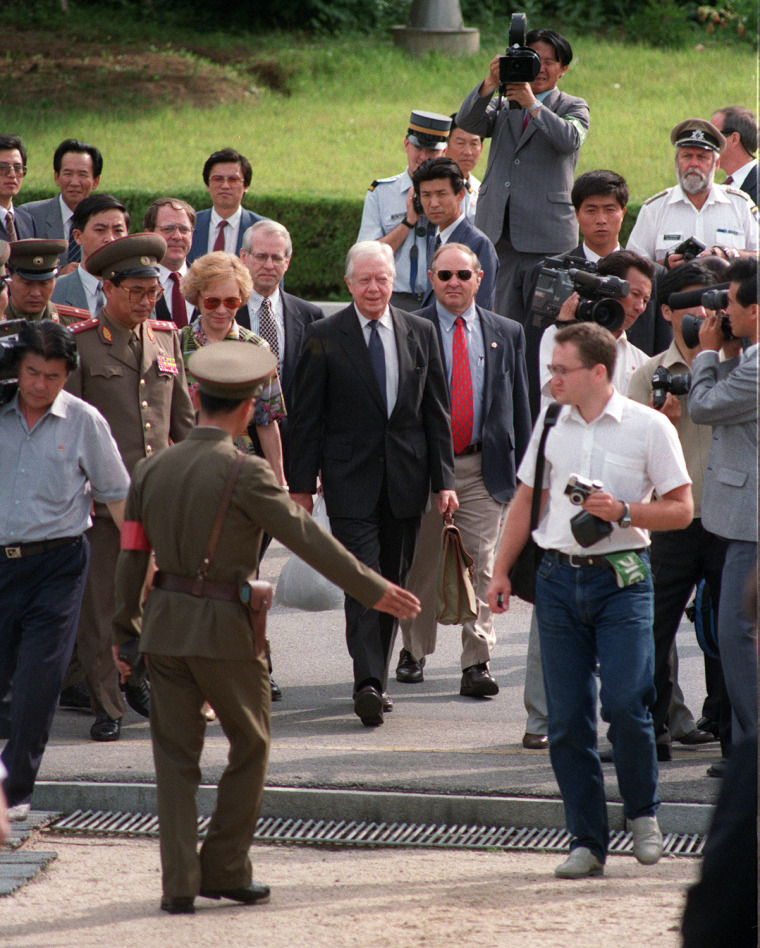
Jim meets Kim
In 1994, Carter, secretly backed by the Clinton administration, traveled to North Korea to meet with ailing President Kim Il-Sung. He came away with a deal, called the Agreed Framework, in which Pyongyang agreed to limit its nuclear activities in return for aid from the U.S. Here, a weary-looking Carter returns to the South Korean side of the demilitarized zone (DMZ).
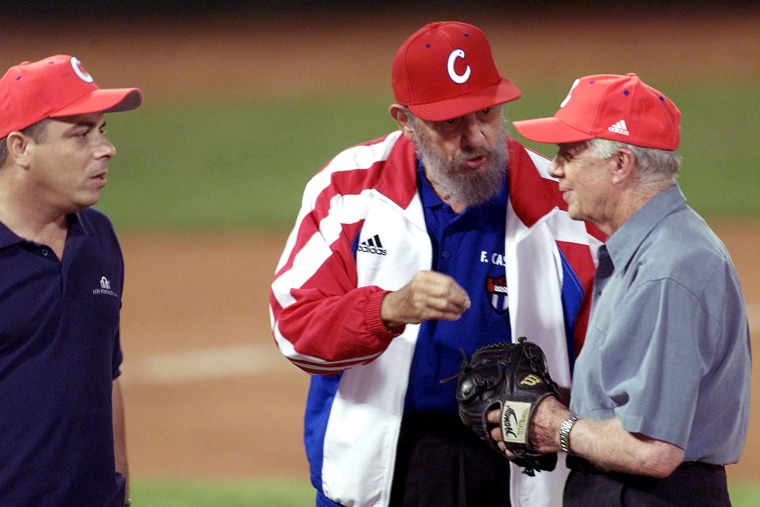
First base with Fidel
In May 2002, Carter became the first American president to visit Cuba since the 1959 revolution. Here, he and Cuban President Fidel Castro talk at a baseball game in Havana. In an uncensored speech on national television and radio, Carter called on the U.S. to end "an ineffective 43-year-old economic embargo" and on Castro to hold free elections, improve human rights and allow greater civil liberties.

Pleased with prize
Carter wanders through a crowd in his home town, Plains, Ga., after a press conference where he talked about receiving the 2002 Nobel Peace Prize. Carter, who became the only U.S. president to have received the prize after leaving office, got the award for his work "to find peaceful solutions to international conflicts, to advance democracy and human rights, and to promote economic and social development" through the Carter Center.
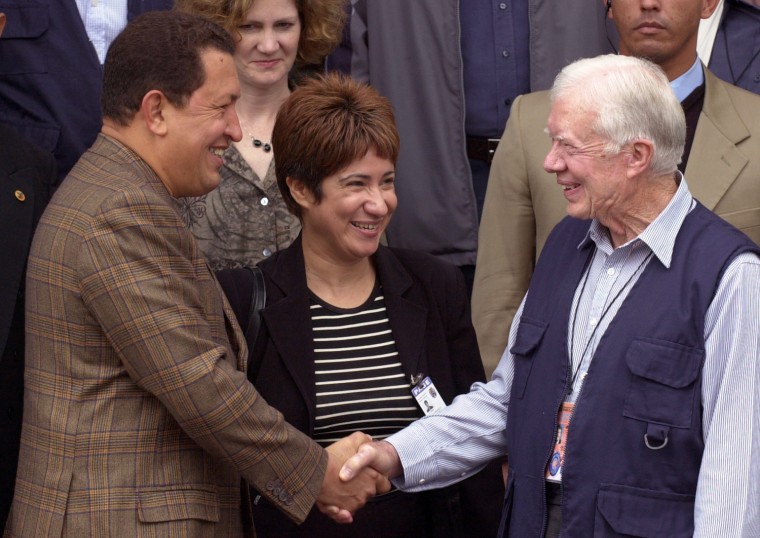
Hugo first?
In 2004 Carter turned his attention to Venezuela, where he helped observe elections. Here, he greets controversial President Hugo Chavez. Later the Carter Center announced that while the process "suffered from numerous irregularities," it did not observe or receive "evidence of fraud that would have changed the outcome of the vote."
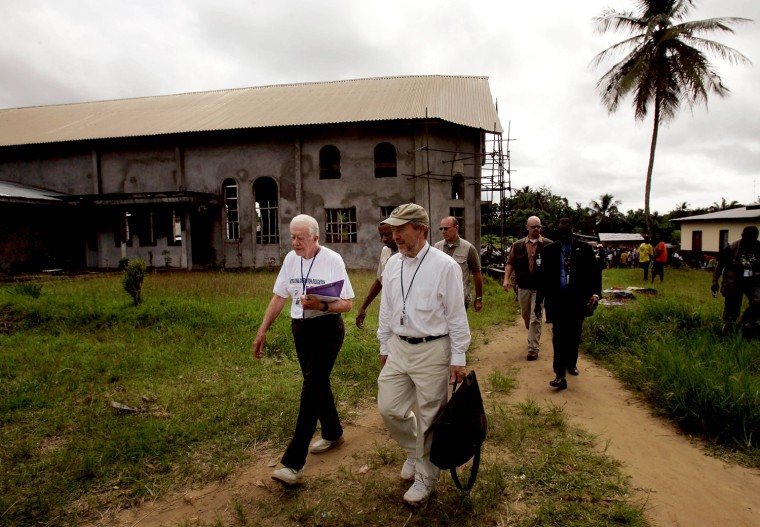
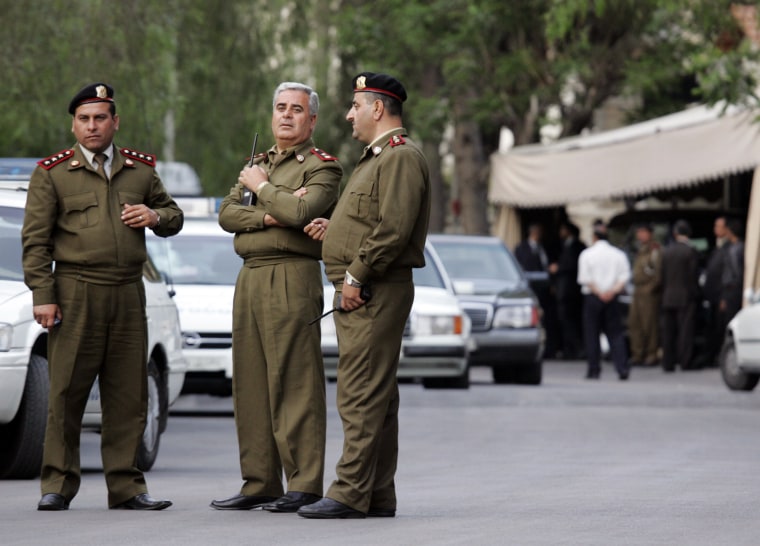
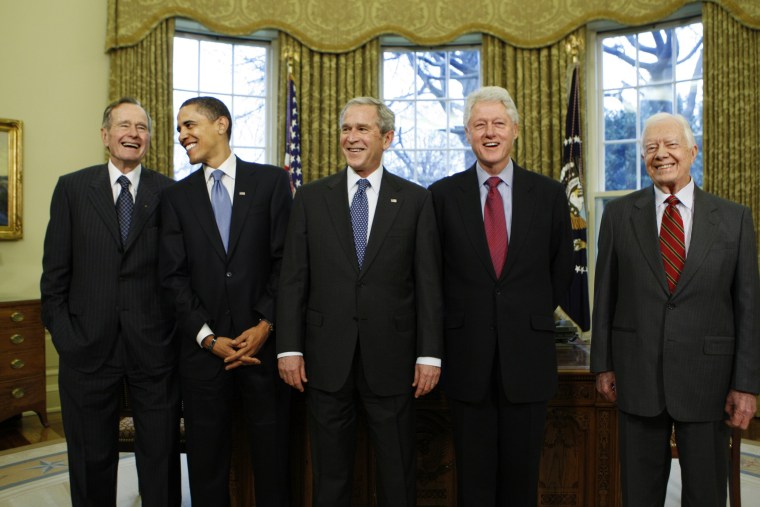
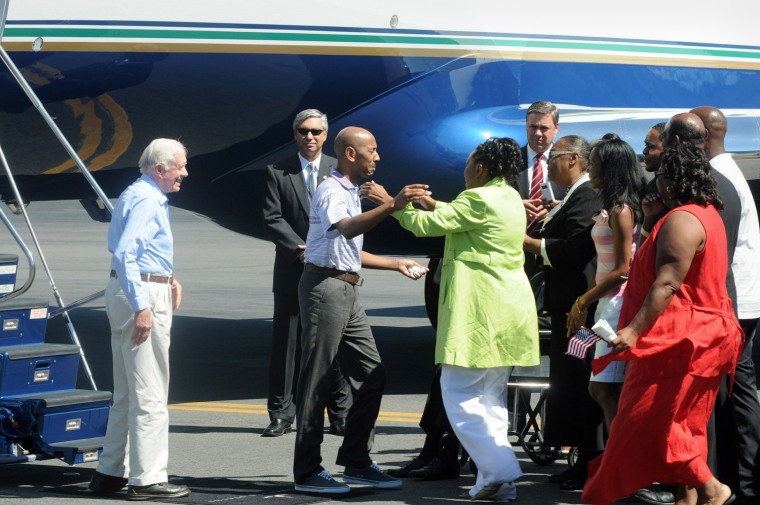
Pyongyang revisited
Carter watches at Boston's Logan Airport in August 2010 as Aijalon Mahli Gomes is greeted by family members. The former president had traveled to North Korea to negotiate Gomes' release from hard labor imposed for illegally crossing into the North from China.
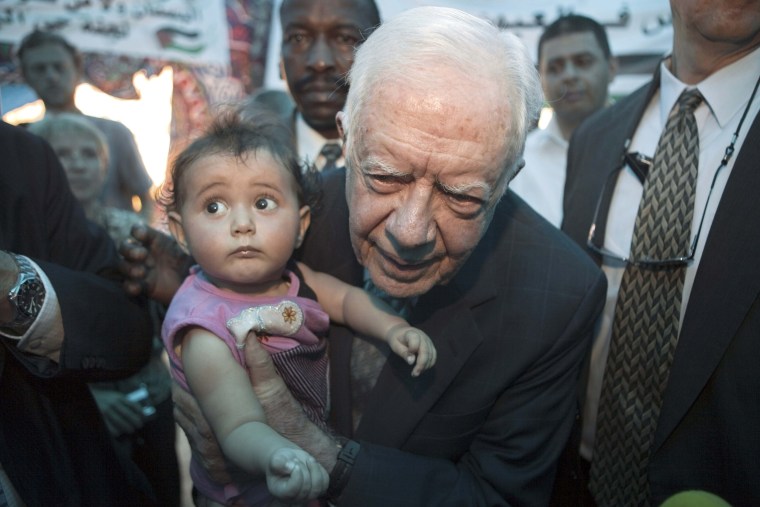
Former US President Jimmy Carter, center, one of the delegates of the Elders group of retired prominent world figures, holds a Palestinian child during a visit to the east Jerusalem neighborhood of Silwan, on Oct. 21, 2010. The Elders are an independent group of eminent global leaders, brought together by Nelson Mandela, who offer their collective influence and experience to support peace building, help address major causes of human suffering and promote the shared interests of humanity.
